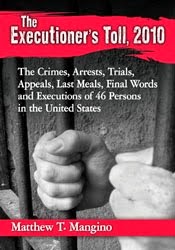“It’s direct, indisputable, empirical evidence that this kind of common claim that ‘the only thing that stops a bad guy with the gun is a good guy with the gun’ is wrong.”
Adam Lankford, a professor at the University of Alabama.
The lengthy police response to a school shooting
in Uvalde,
Texas, and the death of an armed security guard as part of an attack
on a Buffalo
supermarket last month have drawn fresh scrutiny to a recurring
(and uniquely
American) debate: What role should the police and bystanders play in active
shooter attacks, and what interventions would best stop the violence?
The debate has moved to Capitol Hill as lawmakers
consider gun
safety legislation that could increase funding for mental health
services, school safety and other measures aimed at keeping guns out of the
hands of dangerous people. “What stops armed bad guys is armed good guys,”
Senator Ted Cruz suggested in
the wake of the Uvalde shooting, echoing many other gun
rights advocates over the years.
Researchers who study active shooter events say it
can be difficult to draw broad policy conclusions from individual episodes, but
a review of data from two decades of such attacks reveals patterns in how they
unfold, and how hard they are to stop once they have begun, reports The New York Times.
There were at least 433 active shooter attacks — in
which one or more shooters killed or attempted to kill multiple unrelated
people in a populated place — in the United States from 2000 to 2021. The
country experienced an average of more than one a week in 2021 alone.
The data comes from the Advanced Law Enforcement
Rapid Response Training Center at Texas State University, whose researchers
work with the F.B.I. to catalog and examine these attacks. Unlike mass shooting
tallies that count a minimum number of people shot or killed, the active attack
data includes episodes with fewer casualties, but researchers exclude domestic
shootings and gang-related attacks.
Researchers caution that some older attacks may be
missing from the data, but they feel confident in their overall assessment that
shootings are increasing. What is less clear is how to limit the damage of these
attacks, given how quickly they unfold and how powerful the weapons used can
be.
Most attacks captured in the data were already over
before law enforcement arrived. People at the scene did intervene, sometimes
shooting the attackers, but typically physically subduing them. But in about
half of all cases, the attackers commited suicide or simply stopped shooting
and fled.
“It’s direct, indisputable, empirical evidence that
this kind of common claim that ‘the only thing that stops a bad guy with the
gun is a good guy with the gun’ is wrong,” said Adam Lankford, a professor at
the University of Alabama, who has studied mass shootings for more than a
decade. “It’s demonstrably false, because often they are stopping themselves.”
Police officers shoot or physically subdue the
shooter in less than a third of attacks
Most events end before the police arrive, but police
officers are usually the ones to end an attack if they get to the scene while
it is ongoing.
Hunter Martaindale, director of research at the
ALERRT Center, said the group has used the data to train law enforcement that
“When you show up and this is going on, you are going to be the one to solve
this problem.”
Information on police response time is incomplete,
but in the available data, it took law enforcement three minutes, on average,
to arrive at the scene of an active shooting.
Yet, even when law enforcement responds quickly —
sometimes within seconds — or if officers are already on the scene when the
attack begins, active shooters can still wound and kill many people.
“Law enforcement could be one minute out, and if
that individual is proficient with the weapon system they’re using, they can
quickly go through a lot of ammunition,” Mr. Martaindale said. “And if they’re
proficient in their accuracy, you could have very high victim counts.”
In Dayton, Ohio, in 2019, an attacker shot 26
people and killed nine outside a downtown bar in the 32 seconds before a police
officer on duty shot the attacker. A week earlier, at the Gilroy Garlic
Festival in Northern California, nearby officers engaged an attacker
within a minute of his opening fire, but after 20 people had been shot. Three
victims died and the attacker died by suicide.
“There’s not a lot that can be done to stop someone
in the opening seconds of harming a significant number of people,” Mr. Lankford
said.
And, like in Uvalde, law enforcement does not always
bring an attack to a quick end. When a gunman opened fire at the Pulse
nightclub in Orlando, Fla., in 2016, a detective working extra duty shot
at the gunman from outside the club. More police officers began arriving less
than two minutes later. But the police did not enter the club for several
minutes, after the gunman had paused his initial assault. Police officers ended
the attack when they shot the gunman three hours after the assault began.
Forty-nine people were killed and 53 more were wounded.
Bystanders stop some attackers, more often
In the wake of deadly shootings, gun rights
advocates often push to arm more people, citing prominent examples where a
“good guy with a gun” stopped a “bad guy.”
After a gunman shot 46 people in a church in Sutherland
Springs, Texas, in 2017, an armed neighbor arrived at the scene and exchanged
gunfire with the gunman, injuring him, until the gunman fled.
But armed bystanders shooting attackers was not
common in the data — 22 cases out of 433. In 10 of those, the “good guy” was a
security guard or an off-duty police officer.
“The actual data show that some of these kind of
heroic, Hollywood moments of armed citizens taking out active shooters are just
extraordinarily rare,” Mr. Lankford said.
In fact, having more than one armed person at the
scene who is not a member of law enforcement can create confusion and carry
dire risks. An armed bystander who shot and killed an attacker in 2021 in Arvada,
Colo., was himself shot and killed by the police, who mistook him for the
gunman.
It was twice as common for bystanders to physically
subdue the attackers, often by tackling or striking them. At Seattle
Pacific University in 2014, a student security guard pepper sprayed and
tackled a gunman who was reloading his weapon during an attack that killed one
and injured three others. The guard took the attacker’s gun away and held the
attacker until law enforcement arrived.
When a gunman entered a classroom at the University
of North Carolina at Charlotte in 2019, a student tackled him. The student
was shot and killed, but the police chief said the attack would have had a far
worse death toll had the student not intervened.
One in four attacks ends in a shooter suicide
In more than a quarter of episodes, the attackers
ended the shootings by turning the guns on themselves.
Many attackers died by suicide before the police
arrived. At a Binghamton, N.Y., immigration services center in 2009, an
attacker shot 17 people, killing 13, before turning the gun on himself. A
middleschooler died by suicide after shooting two fellow students and a teacher
in Sparks, Nev., in 2013. After shooting 471 people at the Route 91
Harvest Festival in Las Vegas from a hotel room overlooking the festival,
the gunman died by suicide before the police arrived to his room.
The share of attackers who die by suicide is most
likely a fraction of those who have suicidal expectations, Mr. Lankford said.
Based on evidence attackers leave before attacks, like online posts or suicide
notes, more say they expect to die. Sometimes they expect to provoke law
enforcement to kill them, Mr. Lankford said.
Police officers exchanged gunfire in 2018 with a
gunman who shot 12 people at a bar in Thousand Oaks, Calif., before he
shot himself.
At Virginia Tech in 2007, a gunman locked
doors to the building, initially stalling the police, before attacking students
and professors, eventually shooting 49 people. But once law enforcement was
able to enter, the attacker shot himself as police officers approached.
One in four attackers leaves the scene (though most
are later caught)
About a quarter of shootings ended when the attacker
or attackers stopped of their own accord and left the scene, then were
apprehended or died by suicide at another location.
Many attacks that end when the shooter flees are
spontaneous; for example, one may stem from a dispute that escalates when one
party pulls out a gun.
In San Antonio in 2019, a man had a
disagreement with the staff of a moving company, then
opened fire on the company’s workers before running away. The police
apprehended him later without incident. Last year, a man who was kicked out of
a nightclub in Wichita, Kan., after a fight returned and shot six
people, killing one. He fled the scene, and the police arrested him a month
later in Phoenix.
Because these kinds of attacks are generally not
planned, attackers may be more inclined to flee in hopes of getting away, Mr.
Martaindale said.
But many premeditated attacks also ended when the
attacker or attackers left the scene. After a gunman shot 34 people in 2018
at Marjory Stoneman Douglas High School in Parkland, Fla., he dropped his
weapon and fled the school with other students, bypassing police officers who
had arrived on the scene but had not yet attempted to intervene. After fleeing,
the gunman walked to a Walmart, bought a drink at a Subway and stopped at a
McDonald’s before he
was apprehended by the police on a residential street.
In El Paso, a gunman shot 45 people, killing
23, in a Walmart before fleeing the scene. The police arrested him down the
road without incident.
Why attackers stop themselves is a hard thing to
know, but Mr. Lankford, after studying shooters for years, has some guesses.
One is that sometimes, shooters plan for a dramatic confrontation with the
police that does not happen. Another possibility, he said, is that the reality
of their actions sets in.
To read more CLICK HERE













